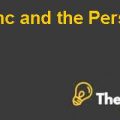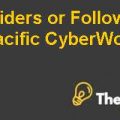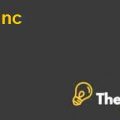
Introduction:
Rosetta stone was a company involved in the business of making technology driven and featured language software to the customers. The company was formed in 1992 by a person named Stoltzfus, who was very anxious about the ways to learn different languages and thus decided to progress with an idea of making language software house, along with his brother, which would assist the learner of a specific language.
He decided to go for a language learning software in Compact Disk (CD) and sold them to a number of customers, in which a technology of audio and picture were used to facilitate a language learner.
With this advanced way the learners were very motivated with the teaching method which was interactive, as it combines the text, audio and pictures while instructing the learners to enhance their vocabulary and grammatical structure. The experiment was widely accepted.
Performance:
Tom Adam, the owner of the company proved to be the right man with his great managing and intellectual talent; he has done great work which led the company to double its revenue from $25 million to $48 million. Observing this growth rate Tom realizes the company’s need of expansion, which will require more finance. The growth in sales revenue from 2006 to 2009 was extensive. In the later year, the company became a renowned brand for recognized learning software. In the industry of education, more than 35% were attributable to self-study learners, who could not even find time for proper coaching, so for them it was very helpful.
In addition, Rosetta had been putting efforts in the social media to approach new customers and provide them with support, online games and dynamic conversation through its platform which was called Rosetta World (Virtual). The company has also announced its own Studio to fill up the gap between the learners to effectively coordinate with each other. But the company was dealing with tough competitions from companies like Berlitz and Auralog who also offered software solution for learning languages.
Problem:
During the 2008 recession, every company in the world had been adversely affected to a greater extent due to the credit crunch and various other business crises. During this recession, the company was keen towards expanding their projects and to finance them with the issuance of shares to the general public through Initial Public Offering (IPO).
Private company:
Since the company was privately owned, the offer to the public to buy its shares was prohibited. Another problem that this private company was facing that it cannot obtain loans since its Market Value cannot be calculated. So its value was depended on the negotiation between the two parties. In order to get registered on the Stock Exchange, the following requirements needed to be fulfilled:
- Prepare and Publish financial statements for Public Inspection.
- Audited Financial Statement to verify its truth and fairness.
- Audit of internal control system.
- Follow Corporate Governance rules with the requirements of a separate appointment of Board of directors.
- Keep a definite level of the capital.
- Complete other formalities as well.
In order to get the company registered with the Stock Exchange, the company has to follow the various instructions and to get entirely re-structured. Board of directors was required to oversight the business.
Initial Public Offering (IPO):
After getting approved form the Securities Exchange & Commission SEC, the company was allowed to offer 6.25 million shares to the public, which represent 30% of the company’s stake. Half of the shares were already issued and half of them were going to be issued as new.
The requirements for the IPO were required to be completed in 3 months, which are as follows:
- The company must prepare a prospectus to be filled with the SEC mentioning the company’s business, financial performance, management hierarchy and structure.
- The company must select an appropriate bank of financial institution as an underwriter, who would be responsible for selling the shares of the company.
- During the meetings, the company tries to draft the underwriting agreement with the selected investment banks.
- Underwriters have an agreement which states that they will buy certain amount of shares not sold.
- Consent of both the parties must be there before making the underwriting agreement.
After that when the public opinion has obtained then the underwriters used to sign the agreement during which the final price of the shares and compensation amount was ascertained.................
This is just a sample partial case solution. Please place the order on the website to order your own originally done case solution.
This case is the April 2009 decision of the Rosetta Stone manage to price the initial public offering of stock Rosetta Stone at one of the most difficult periods of capital-raising stories. Rosetta Stone is described by a unique language learning strategy and associated with strong financial performance. Students are encouraged to value the shares and take the position that the current $ 15 to $ 17 per share range of supply is appropriate. Case is designed to show the corporate valuation using discounted cash flows and market several expert company. The epilogue details 40% growth in the first day of Rosetta Stone shares from $ 18 offer price. With this background, students are exposed to a well-known financial anomalies-IPO underestimate the phenomenon and asked to critically discuss the various proposed explanations. "Hide
by Michael J. Schill, Suprajj Papireddy Source: University of Virginia Darden School Foundation 23 pages. Publication Date: December 21, 2009. Prod. #: UV3930-PDF-ENG













